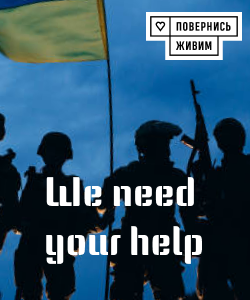Ukrainian Journalistic Report
Amid increasing tensions and an unprecedented wave of violence in the Kashmir region, the situation in the Indian-controlled part of this disputed territory has once again worsened. The largest-scale attack in recent years, which took place on April 22 in Pahalgam, shocked the world and sparked a new wave of concern about security and stability in this multifaceted and conflict-prone area. According to reliable sources from the Reuters agency, citing three anonymous Indian security officials, the number of casualties from the militants' attack has reached at least 20 people. However, other reports suggest that the figure could be as high as 24 or even 26 fatalities. As of now, official information remains uncertain, as local law enforcement and security agencies are still investigating the scale of the tragedy. What is known at this point is that the attack occurred in a mountainous, sparsely populated part of Pahalgam— a popular resort town that has recently begun to recover after years of violence and tension. Insider sources within the security agencies indicate that the perpetrators operated from several directions: likely involving two or three militants, who opened fire on a group of tourists currently vacationing there. Official statements and initial testimonies suggest that the attack took place in a remote mountain area, complicating efforts to identify those responsible and establish the circumstances. The regional government’s chief, Jammu and Kashmir Prime Minister Omar Abdullah, in a public statement on social media platform X (formerly Twitter), emphasized that the number of victims is still being determined, but this incident is already among the most significant acts of violence against civilians in the region in recent years. He underscored that responsibility for the attack has been taken by unidentified groups, including local radicals. According to Indian media, the group responsible for the armed assault claims to be the “Kashmir Resistance.” This is a little-known but determined militant organization opposing the “demographic changes” in the region—primarily, against the mass settlement of foreigners. Social media reports reveal that the militants state they are fighting against “criminal plans to destroy the authentic Kashmiri identity,” and they emphasize that the main reason for their action is a protest against the arrival of nearly 85,000 “foreigners,” whom, according to radicals, are being forcibly settled on land that was once the primary homeland of the Kashmiri people. Sources point out that an aggressive resettlement policy began in 2019 when the Indian government, led by Prime Minister Narendra Modi, decided to revoke Kashmir’s special status. As a result, the region was divided into two Union Territories—Jammu and Kashmir, and Ladakh. This led to mass migration from other parts of India, increasing tensions and further exacerbating an already volatile conflict. The Indian Prime Minister stated in his comment that “those responsible for this ignoble act will be brought to justice,” and that the government continues to actively fight terrorist groups in the region. He emphasized that violence organized by such formations will not break the will of the Indian government and people. The national stance remains unchanged: Indian authorities are firmly committed to stopping any manifestations of extremism and to fostering stability in the region. It is important to recall that the Kashmir conflict has been ongoing for over three decades and remains one of the most entrenched points of tension between neighboring states—India and Pakistan. The struggle for control over this strategic mountainous area has led to numerous military clashes, mass casualties, and prolonged armed conflicts. As a result, the region remains in a state of constant tension, with some local radicals and opposition forces supporting the idea of independence or reunification with Pakistan. The policy changes enacted in 2019 heightened skepticism and introduced a new phase of conflict. The international community and world leaders have criticized the scale of violence in the region and are calling for diplomatic resolution and compromise. However, the situation remains tense, and the conflict continues to be hot and risky. Thus, the recent attack in Pahalgam again raises questions about security and the prospects for peace in Kashmir, where words like “calm” and “stability” seem distant and unattainable. The staggering toll of casualties, psychological pressure on the local population, and the constant threat of new conflicts testify to the complexity and severity of the current situation in the region—still a symbol of national and religious confrontations, with an uncertain future ahead.

